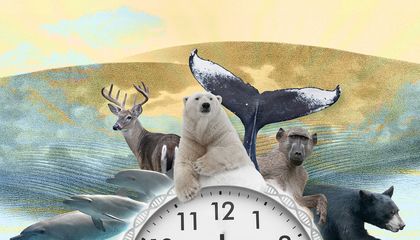A groundbreaking study introduces an epigenetic clock that measures biological age in various animal species, providing crucial insights into their health and potential risks of population collapse. This innovative tool could be vital for monitoring the well-being of endangered creatures such as polar bears, dolphins, and baboons, enabling scientists to take action before it’s too late.
The research, conducted by a team at the University of Southern California, emphasizes the clock’s ability to assess the biological age of different species. By understanding the biological status of these animals, conservationists can better evaluate their health and implement timely interventions as needed. This method is particularly important when considering the impacts of environmental changes and human activity on wildlife.
Potential Impact on Conservation Efforts
Conservation scientists have long sought reliable indicators of animal health, especially for populations under significant stress. With the epigenetic clock, researchers can now detect subtle changes in biological aging that may signal when a population is nearing collapse. This early warning could be especially beneficial for species that are critically endangered or facing rapid decline.
According to the study, published in March 2024, the epigenetic clock functions by analyzing DNA methylation patterns. These patterns change as animals age and can be influenced by environmental factors, including habitat loss and climate change. By measuring these changes, scientists can gain a deeper understanding of how external pressures affect animal health.
Broader Implications for Ecological Research
The findings from this research extend beyond individual species. They have broader implications for ecological studies and the management of wildlife populations. The ability to assess biological age accurately can help in formulating conservation strategies tailored to specific species and their unique challenges.
Dr. Sarah Thompson, the lead researcher, stated, “This tool allows us to monitor not just the age but the health status of these animals. By acting on this information, we can enhance our conservation efforts and potentially reverse declines before they become irreversible.”
As the world grapples with biodiversity loss, tools like the epigenetic clock represent a significant advance in conservation science. By focusing on biological age and health, researchers can prioritize interventions that may save vulnerable populations from extinction.
The introduction of this epigenetic clock marks a pivotal moment in wildlife conservation, offering a promising avenue for protecting endangered species. With its application, there is hope for a more proactive approach to safeguarding the natural world.
